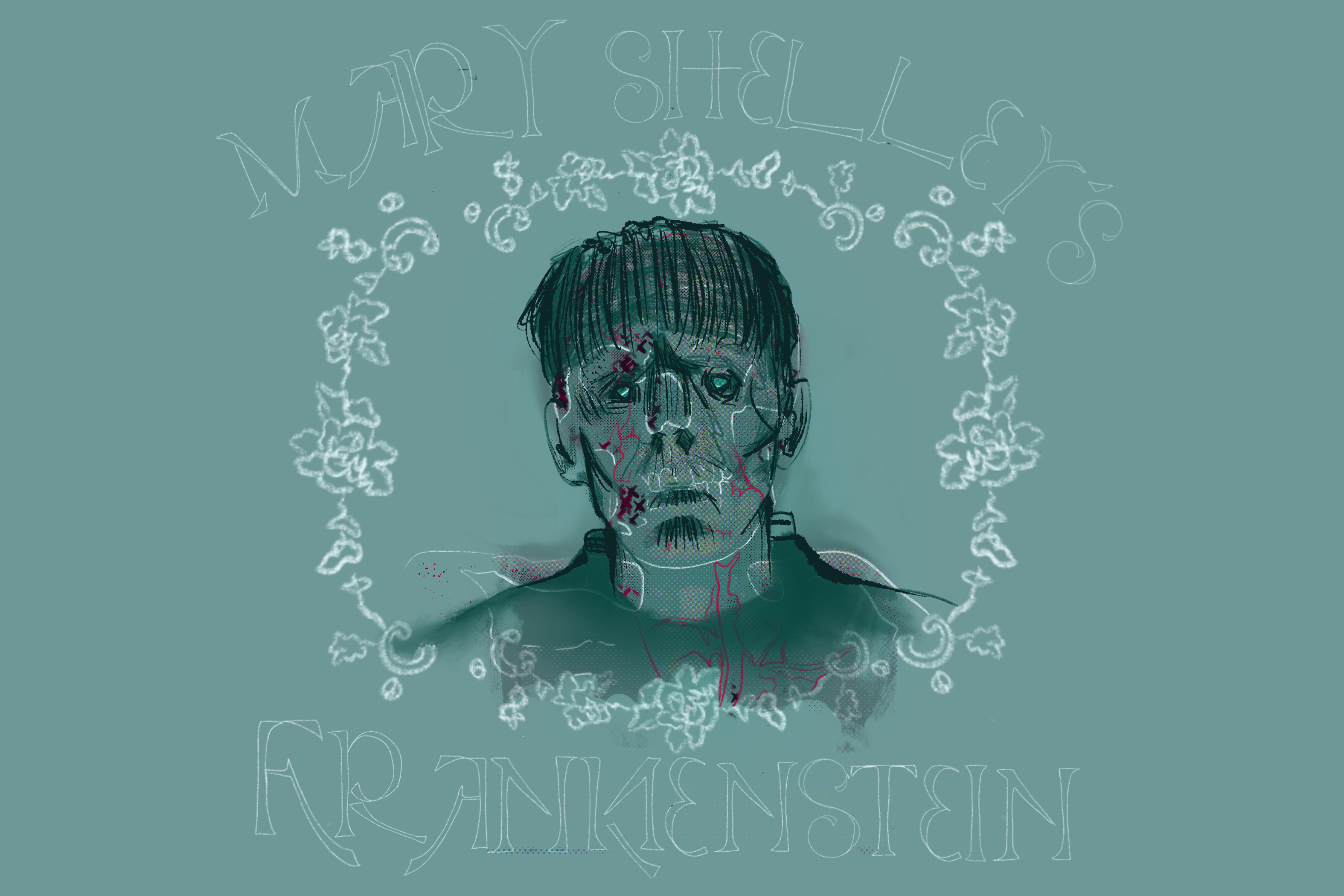Multiple point-of-view narration has become common in modern novels. Novels that incorporate this type of narration switch between different characters’ perspectives to move the story forward. The hit duology “Six of Crows” by Leigh Bardugo is just one example. George R.R. Martin’s “A Song of Ice and Fire” is a wildly popular modern fantasy series that also utilizes the rhetorical device. However, multiple POV narration in novels has a long history. Wilkie Collins’ 1859 novel “The Woman in White” is another commonly cited example. One of the best uses of this literary device has been English author Mary Shelley, who masterfully applied this technique in her debut novel “Frankenstein.”
Shelley’s 1818 novel “Frankenstein” features three narrators, each character speaking from a first-person point of view. The first is Robert Walton, a lonely sailor. The second is Victor Frankenstein, the titular character who engaged in risky scientific experiments and was forced to live with the consequences. The third is “the monster,” the result of Victor’s experiment.
The story begins with the voice of Robert in the form of letters written to his sister. These letters serve as the novel’s framing device, as Robert records the story of Victor’s life. The monster, for a few chapters, takes over the narration as he tells his own story to Victor. Shelley’s technique for using the multiple POV in “Frankenstein” is done logically and productively. Her choices in narration help to create justifications for her storytelling process that are often overlooked by her contemporaries.
Language is one key aspect that Shelley sought to justify with her narration choices. Shelley spoke English, but her main character was a French-speaking man from Switzerland. Since the novel was written in English, she needed an explanation for why Victor would be using English in his first person narration.
To justify Victor’s use of English in the novel, Shelley began the story with the letters of Robert, an Englishman. Once he was rescued by Robert and brought onto his ship, Victor spoke in English to communicate with him and tell Robert his life story.
Through Robert’s letters to his sister, Shelley was able to justify why her French-speaking main character was narrating his story in English. She did not simply leave it to the readers to suspend their disbelief or to accept a story told in English without regard for the main character’s native language. In this way, Shelley used multiple POV narrations as a rhetorical device to explain the language that the story was presented in.
For Shelley, narration served as a tool to justify her language, a fundamental aspect of any novel. It is an aspect that is often taken for granted. However, Shelley tends to the most minute details, working the language choice into the narrative itself.
While some books like “Perks of Being a Wallflower” work the narrator’s reason for telling the story into the narrative, it is common for characters in books to simply narrate without giving any indication of why they are telling the story or who they believe their audience is. This type of narration is common in fiction which raises questions once a character whose personality would indicate no desire to ever write a book is found as the narrating character. Critical audiences may question why the narrating character would even write their own story to present to the world. In Shelley’s meticulously thought-out novel, she creates both a reason for the documentation of the story and identifies an audience for the story within the world of the story.
The reason Victor tells his story stems from his friendship with Robert. Robert’s character speaks freely of his goals and ambitions to Victor, which causes Victor to worry about him. Using multiple POV narration as a rhetorical device, Shelley introduces Victor’s story as a warning tale. Essentially, the audience of Victor’s story is Robert but it is actually written as a form of communication to his sisters in his letters.
The varying narration of the characters’ stories leaves no need for Shelley to unintentionally break the fourth wall in her presentation. The question of “Why was this story written down?” can be answered from the book, “Because Robert was writing to his sister.” Shelley did not have to make Robert an aspiring author in order to justify his recording of Victor’s story. Simply, Robert’s action of recording the story was part of the narrative.
Just as Shelley used multiple POV narration to justify her characters’ manner of storytelling, this also worked vice versa. This applies to her introduction of the monster’s point of view. The bulk of this novel takes place from Victor’s point of view, his story being recounted to Robert.
At the same time, it was also important for Shelley to include the point of view of the monster. She needed to reveal what the monster had seen and done while he and Victor were separated. To accomplish this, Shelley used the rhetorical device of storytelling to shift to the monster’s perspective.
The monster, wanting to ask a favor from Victor, attempted to evoke sympathy in him by telling the story of his own experiences. Just as she did with all of the other POVs featured, Shelley justified the monster’s narration within the context of the story.
A deep analysis of multiple POV as a rhetorical device in “Frankenstein” reveals just how well thought-out every narration choice Shelley made in this novel really was. This might raise the question as to why Shelley felt so compelled to justify her literary choices.
The answer may lie in the novel’s origins.
When Shelley began writing “Frankentstein,” she was a nineteen year-old girl vacationing in a foreign country with many well-established writers of her time. She faced pressure from her companions to join in their friendly horror-writing competition. Well aware that she was a newcomer among these greats, Shelley likely felt motivated to craft her story in a manner that would raise no questions or critiques in her logic. Her ultimate motivation may have been to avoid embarrassment. But Shelley accomplished much more than that.
Still widely read today, “Frankenstein” is a groundbreaking science fiction novel, and Mary Shelley is often considered to be the mother of the genre. Beyond that, Shelley’s “Frankenstein” is a creative, innovative use of the common multiple POV device that can inspire modern authors’ style of writing.

















